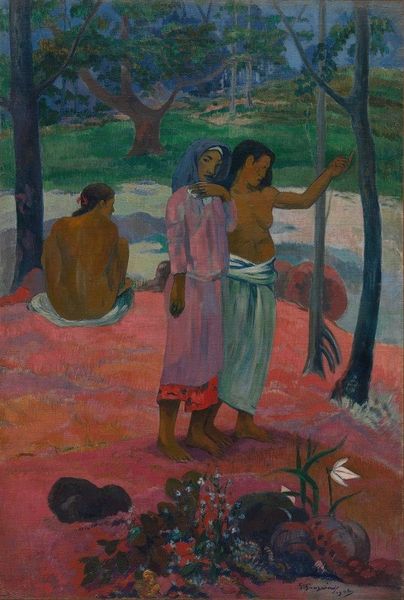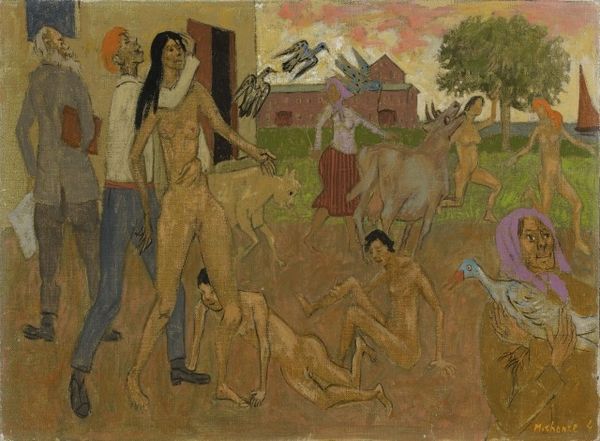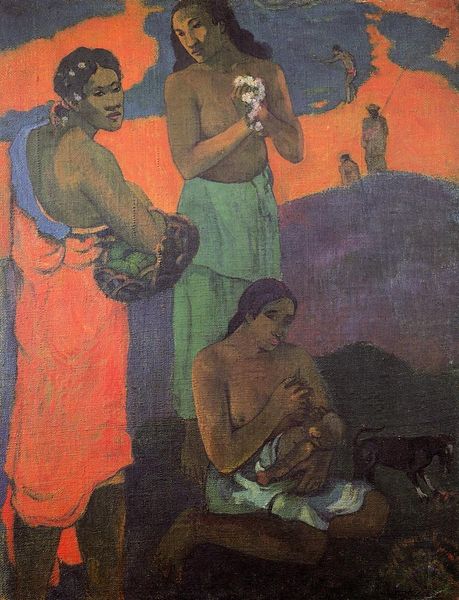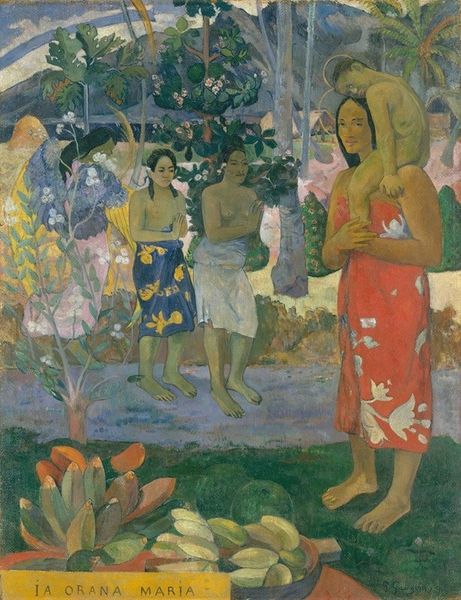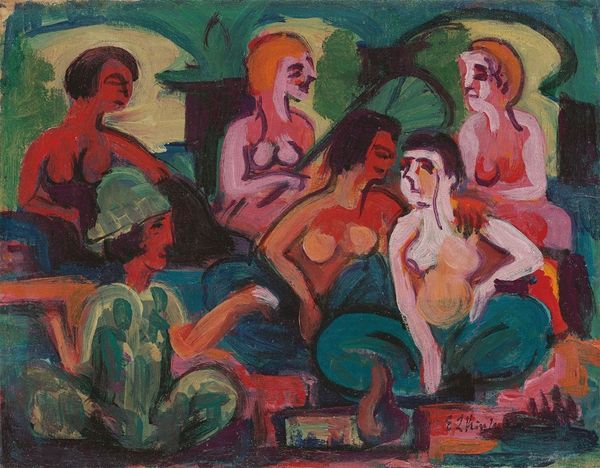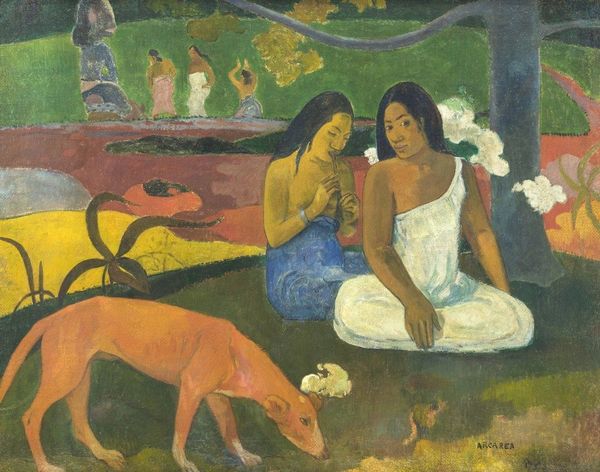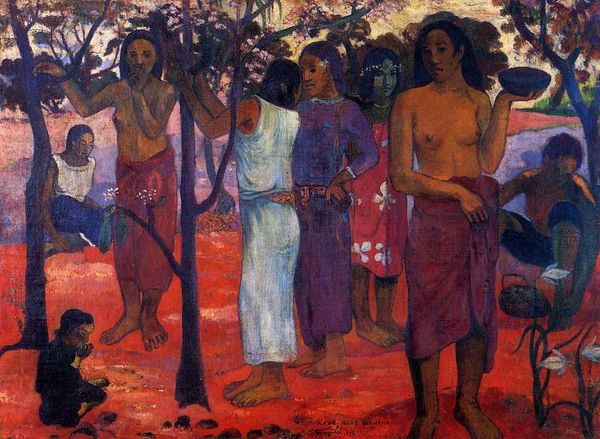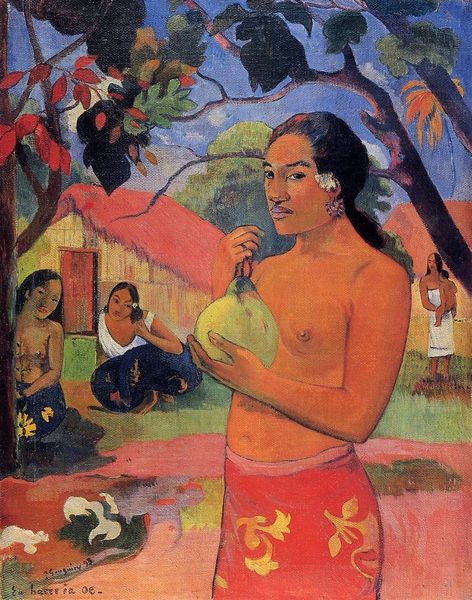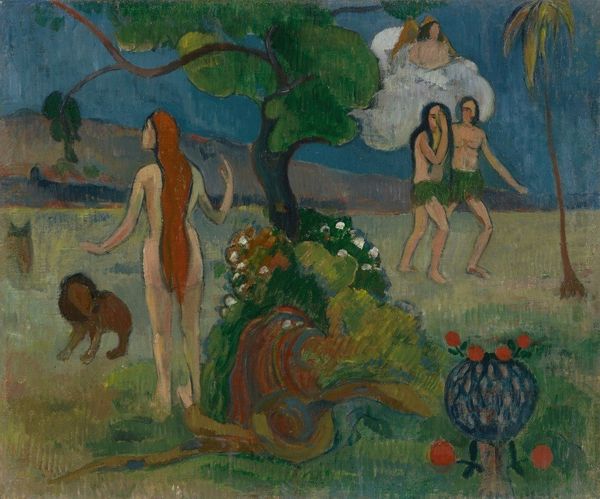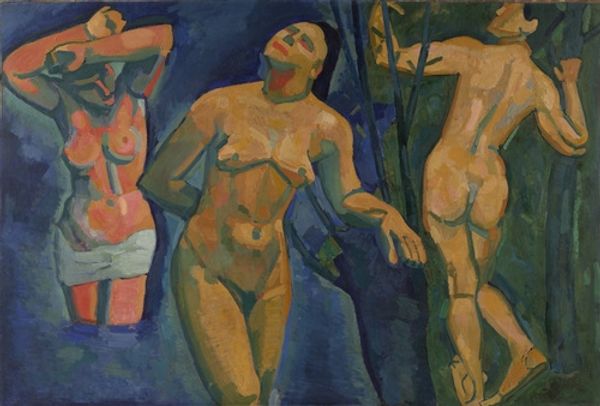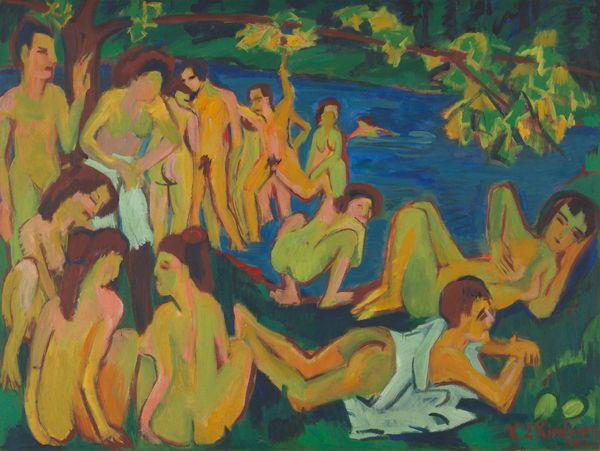
painting, oil-paint
#
figurative
#
painting
#
oil-paint
#
landscape
#
figuration
#
orientalism
#
symbolism
#
post-impressionism
#
nude
Copyright: Public Domain: Artvee
Editor: Paul Gauguin's 1903 oil painting, "The Invocation", creates a rather surreal landscape. The figures almost seem to float within the space. How do you interpret this work? Curator: It’s crucial to remember Gauguin painted this during his self-imposed exile in Tahiti. We see him grappling with colonialism's impact on Polynesian culture, romanticizing a disappearing world. He constructs an "authentic" primitivism but from a Western perspective. Does that alter your reading of it? Editor: Absolutely, it complicates the sense of serenity I initially perceived. Are the figures arranged in a specific manner, or posed, perhaps even? Curator: Definitely posed. Notice the juxtaposition of Christian and indigenous symbolism. The cross on the hill, next to the figures engaging in what could be read as ritual practice. Gauguin positions himself as a translator or even a savior of this culture, which is deeply problematic considering his colonial gaze. Editor: It’s a powerful clash of cultures then, presented through Gauguin's very particular lens. He is both participant and observer, but mostly an exploiter. Curator: Precisely. His work, although visually alluring, raises critical questions about cultural appropriation, and the politics of representation, making it essential for us to consider the museum's role in exhibiting it and contextualizing this complicated history. Editor: That makes me look at everything differently now. Thanks. Curator: It's these nuanced perspectives that bring new meaning to artwork over time!
Comments
No comments
Be the first to comment and join the conversation on the ultimate creative platform.
